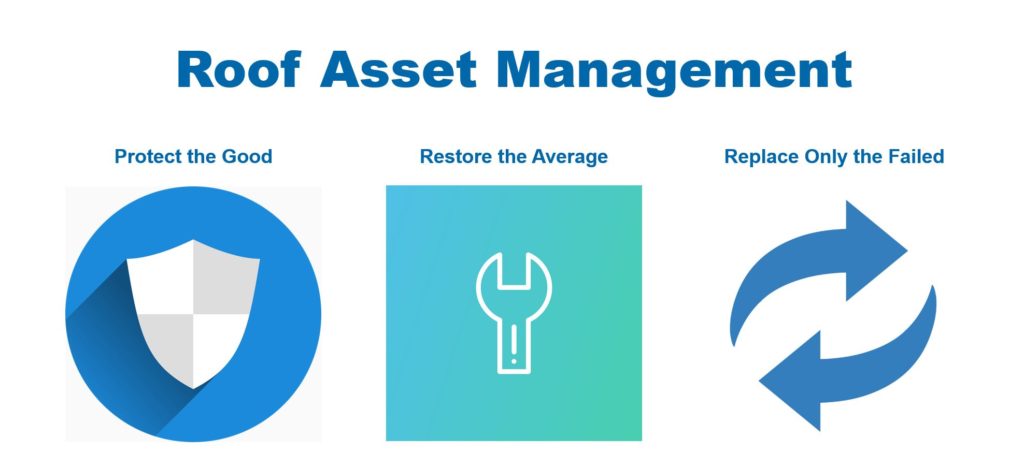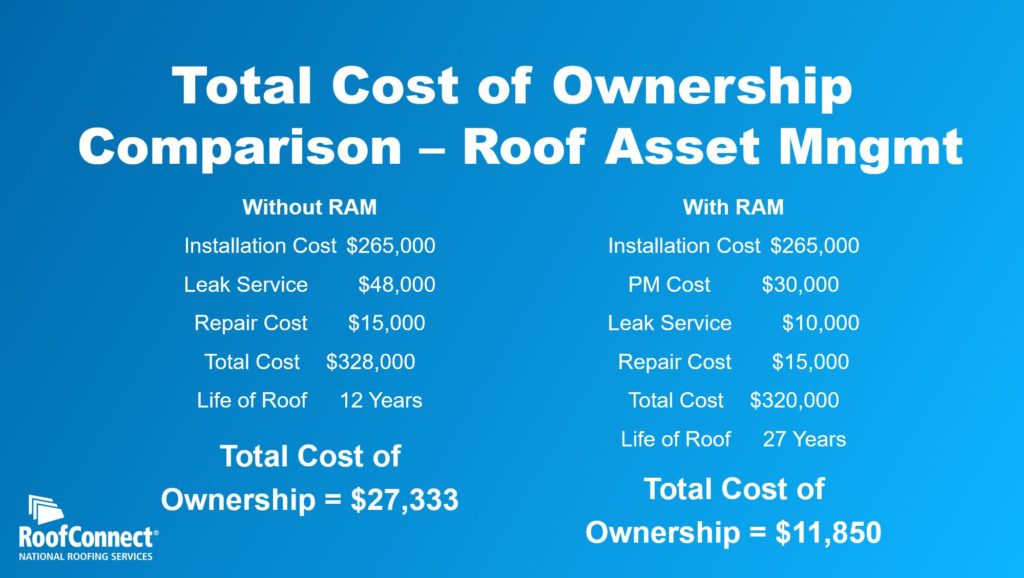The anatomy of a roof leak
Picture yourself walking into your facility and finding a puddle of water on the floor. Your immediate thought would probably be – “Something punched a hole in my roof,” or “it hasn’t rained in days; why is my roof leaking?”
Unfortunately, this is not how roof leaks always work.
The Anatomy of a Roof Leak
1. Compromised Flashing
First, to have a leak, the membrane or flashing must be compromised, allowing water to penetrate this area.
2. Coverboard
Next, the water goes to the coverboard (roof board), and the coverboard begins to soak up the water. (Remember, the coverboard’s purpose is to provide a rigid surface to protect the roof from hail damage and foot traffic.) Once the coverboard is soaked, it softens.
3. Rotting Insulation
After a while, the coverboard absorbs all the water it can handle; the water goes to the insulation board and begins to rot the organic fibers (which insulate your building). Rotted organic fibers cause energy costs to go up.

4. Metal Deck Begins to Rust
Soon after, water goes to the metal deck. As you already know, moisture and metal cause rust, which compromises the primary function of the deck – to support the roof and handle the design load.
5. Breaching the Drop Ceiling/Sheet Rock
Once water makes its way through the metal deck, it usually goes to the sheetrock or drop ceiling. (Hopefully, missing lights or other electrical equipment.
6. Staining
Then, the sheetrock and drop ceilings absorb all the water they can handle, rearing themselves as the dreaded brown stain, then allowing water to drop to the store floor. Did this waterfall on a register or inventory? Or did it land in the middle of an aisle, making you susceptible to slip-fall litigation?
7. Notifying Your Contractor
Finally, the manager notifies you of a leak, and you contact your roofer.
Preventing a Roof Leak
You may have been lucky this time, and the water didn’t damage expensive equipment or cause a customer to slip and fall in your facility. So, how do you prevent this from happening again? The answer comes in the form of a roof asset management program.
Why Use a Roof Asset Management Program?

Why would you use a roof asset management program? Well, a recent study done by the National Roofing Contractors Association (NRCA) indicates that the average roof service life varies greatly.
- Unmaintained roofs average 10-14 years
- Maintained Roofs average 15 – 20 years
- Managed roofs covered by Asset management programs average 20 – 35 years

Ultimately, there is no better way to protect your roof than a Roof Asset Management program, provided by reliable, trusted roofing contractor like RoofConnect. Don’t hesitate, contact us below for a Free Roof Assessment!
© 2018 All rights Reserved.


